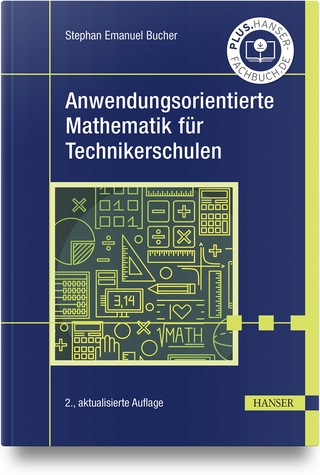
Introduction to Numerical Geodynamic Modelling
Cambridge University Press (Verlag)
978-1-107-14314-2 (ISBN)
This hands-on introduction to numerical geodynamic modelling provides a solid grounding in the necessary mathematical theory and techniques, including continuum mechanics and partial differential equations, before introducing key numerical modelling methods and applications. Fully updated, this second edition includes four completely new chapters covering the most recent advances in modelling inertial processes, seismic cycles and fluid-solid interactions, and the development of adaptive mesh refinement algorithms. Many well-documented, state-of-the-art visco-elasto-plastic 2D models are presented, which allow robust modelling of key geodynamic processes. Requiring only minimal prerequisite mathematical training, and featuring over sixty practical exercises and ninety MATLAB® examples, this user-friendly resource encourages experimentation with geodynamic models. It is an ideal introduction for advanced courses and can be used as a self-study aid for graduates seeking to master geodynamic modelling for their own research projects.
Taras Gerya is Professor of Earth Sciences at the Swiss Federal Institute of Technology (ETH-Zurich). He is an expert in numerical geodynamic modelling, with his current research focusing on subduction and collision processes, ridge-transform oceanic spreading patterns, intrusion emplacement into the crust, generation of earthquakes, fluid and melt transport in the lithosphere, Precambrian geodynamics, formation of terrestrial planets and evolution of life. In 2008, he was awarded the Golden Owl Prize by ETH students for his teaching on continuum mechanics and numerical modelling.
1. The continuity equation; 2. Density and gravity; 3. Numerical solutions of partial differential equations; 4. Stress and strain; 5. The momentum equation; 6. Viscous rheology of rocks; 7. Numerical solutions of the momentum and continuity equations; 8. The advection equation and marker-in-cell method; 9. The heat conservation equation; 10. Numerical solution of the heat conservation equation; 11. 2D thermomechanical code structure; 12. Elasticity and plasticity; 13. 2D implementation of visco-elasto-plasticity; 14. 2D thermomechanical modelling of inertial processes; 15. Seismo-thermomechanical modelling; 16. Hydro-thermomechanical modelling; 17. Adaptive mesh refinement; 18. The multigrid method; 19. Programming of 3D problems; 20. Numerical benchmarks; 21. Design of 2D numerical geodynamic models; Epilogue: outlook; Appendix: MATLAB® program examples; References; Index.
| Erscheint lt. Verlag | 23.5.2019 |
|---|---|
| Zusatzinfo | 96 Plates, color; 52 Halftones, color; 26 Halftones, black and white; 44 Line drawings, color; 40 Line drawings, black and white |
| Verlagsort | Cambridge |
| Sprache | englisch |
| Maße | 178 x 253 mm |
| Gewicht | 1070 g |
| Themenwelt | Mathematik / Informatik ► Mathematik ► Angewandte Mathematik |
| Naturwissenschaften ► Geowissenschaften ► Geologie | |
| Naturwissenschaften ► Geowissenschaften ► Geophysik | |
| ISBN-10 | 1-107-14314-4 / 1107143144 |
| ISBN-13 | 978-1-107-14314-2 / 9781107143142 |
| Zustand | Neuware |
| Haben Sie eine Frage zum Produkt? |
aus dem Bereich


